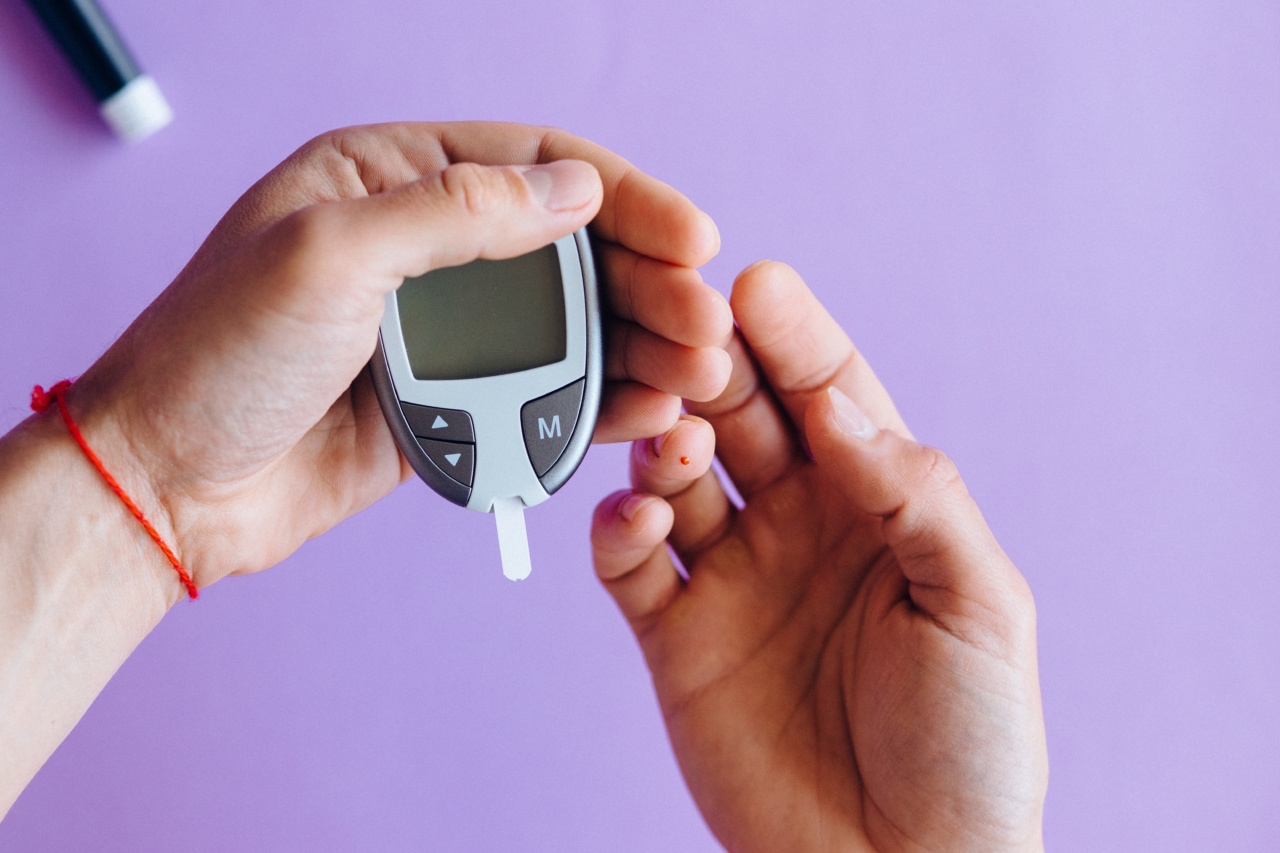Low blood glucose, also known as hypoglycemia, occurs when the level of sugar (glucose) in the blood drops below normal ranges.
This can happen to anyone, but it is most commonly associated with individuals who have diabetes, especially those who take insulin. In this article, we will explore the various manifestations of low blood glucose and discuss how to recognize and manage this condition.
Why does low blood glucose occur?
Low blood glucose can occur for several reasons, including:.
- Inadequate food intake
- Delayed or missed meals
- Excessive physical activity
- Alcohol consumption without food
- Medication side effects
Signs and symptoms of low blood glucose
Recognizing the signs and symptoms of low blood glucose is essential for prompt intervention and avoiding complications. Some manifestations may vary depending on the individual, but common symptoms include:.
- Sweating
- Shakiness or tremors
- Irritability or mood changes
- Dizziness or lightheadedness
- Hunger or cravings
- Difficulty concentrating
- Blurry vision
- Weakness or fatigue
- Headaches
- Fast heartbeat
Severe manifestations of low blood glucose
In more severe cases, low blood glucose can lead to more serious manifestations, including:.
- Seizures
- Loss of consciousness
- Confusion or disorientation
- Unresponsiveness
Managing low blood glucose
It is crucial to address low blood glucose promptly to prevent complications. Here are some steps to manage low blood glucose:.
- Consume quick-acting carbohydrates: Consuming foods or drinks high in sugar, such as fruit juice or glucose tablets, can rapidly raise blood glucose levels.
- Follow up with a balanced meal or snack: After addressing the immediate low blood glucose, consuming a balanced meal or snack containing protein, carbohydrates, and healthy fats can help sustain blood glucose levels.
- Monitoring blood glucose levels: Regularly monitoring blood glucose levels can help individuals with diabetes identify patterns and make adjustments to medication or lifestyle factors accordingly.
- Communicate with healthcare provider: If low blood glucose episodes become frequent, it is important to discuss this with a healthcare provider to evaluate the management plan and make any necessary adjustments.
Preventing low blood glucose
Although it may not always be possible to prevent low blood glucose entirely, there are strategies that can help reduce the risk. These include:.
- Eating regular, well-balanced meals and snacks
- Avoiding excessive alcohol consumption without eating food
- Adjusting medication dosages under medical supervision
- Monitoring blood glucose levels regularly
- Engaging in physical activity with a healthcare provider’s guidance
When to seek medical attention
In some instances, low blood glucose may require immediate medical attention. Medical help should be sought if:.
- The individual is unable to take fluids or food orally
- They are experiencing seizures or loss of consciousness
- Their symptoms worsen despite initial management attempts
Conclusion
Low blood glucose can have various manifestations that can range from mild to severe. Recognizing the signs and symptoms is vital for timely intervention.
Managing low blood glucose involves consuming quick-acting carbohydrates, following up with balanced meals or snacks, and monitoring blood glucose levels. Preventive measures and adjusting medication under medical supervision can help reduce the risk of low blood glucose. Ultimately, individuals should seek medical attention if symptoms worsen or in more severe instances.





























